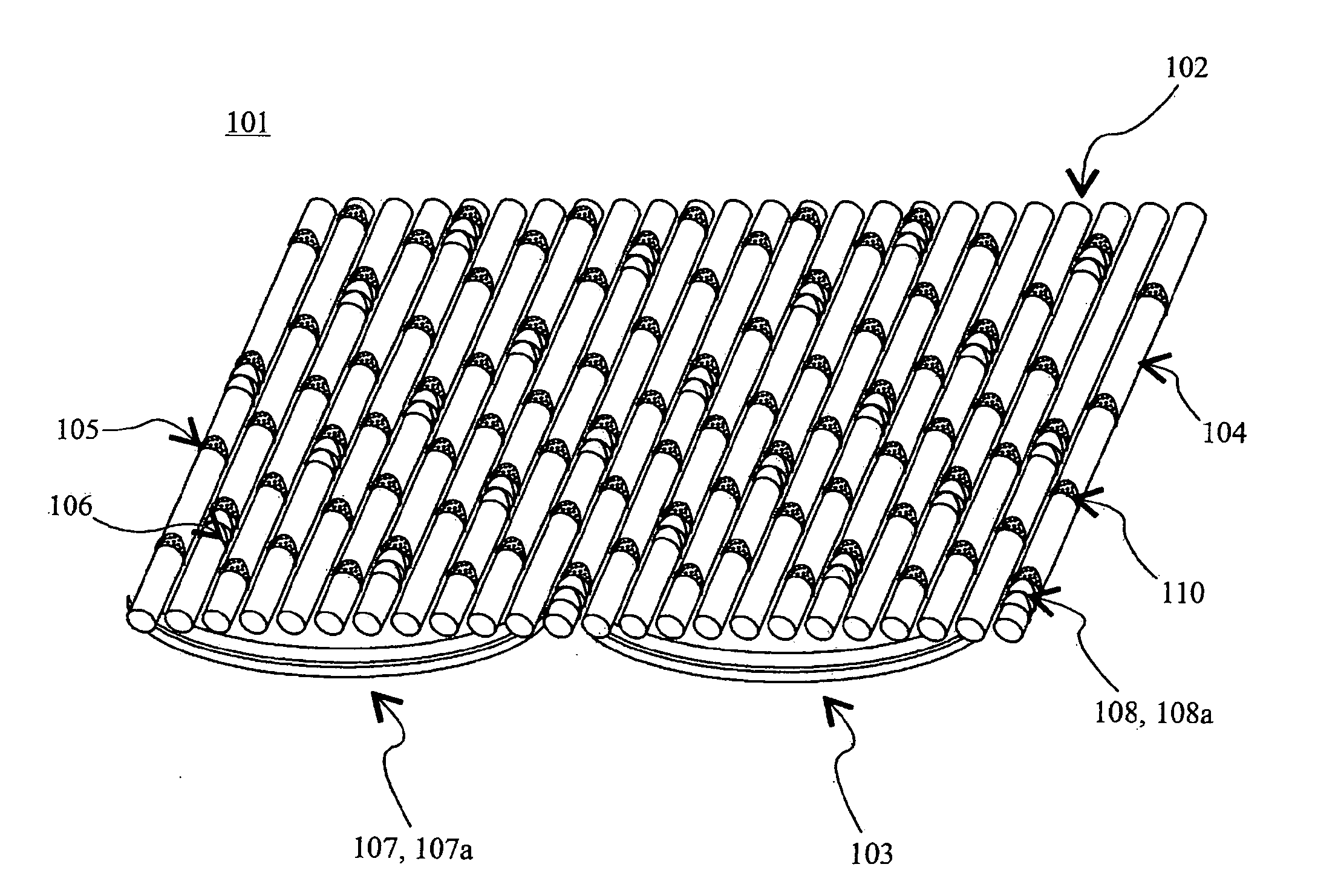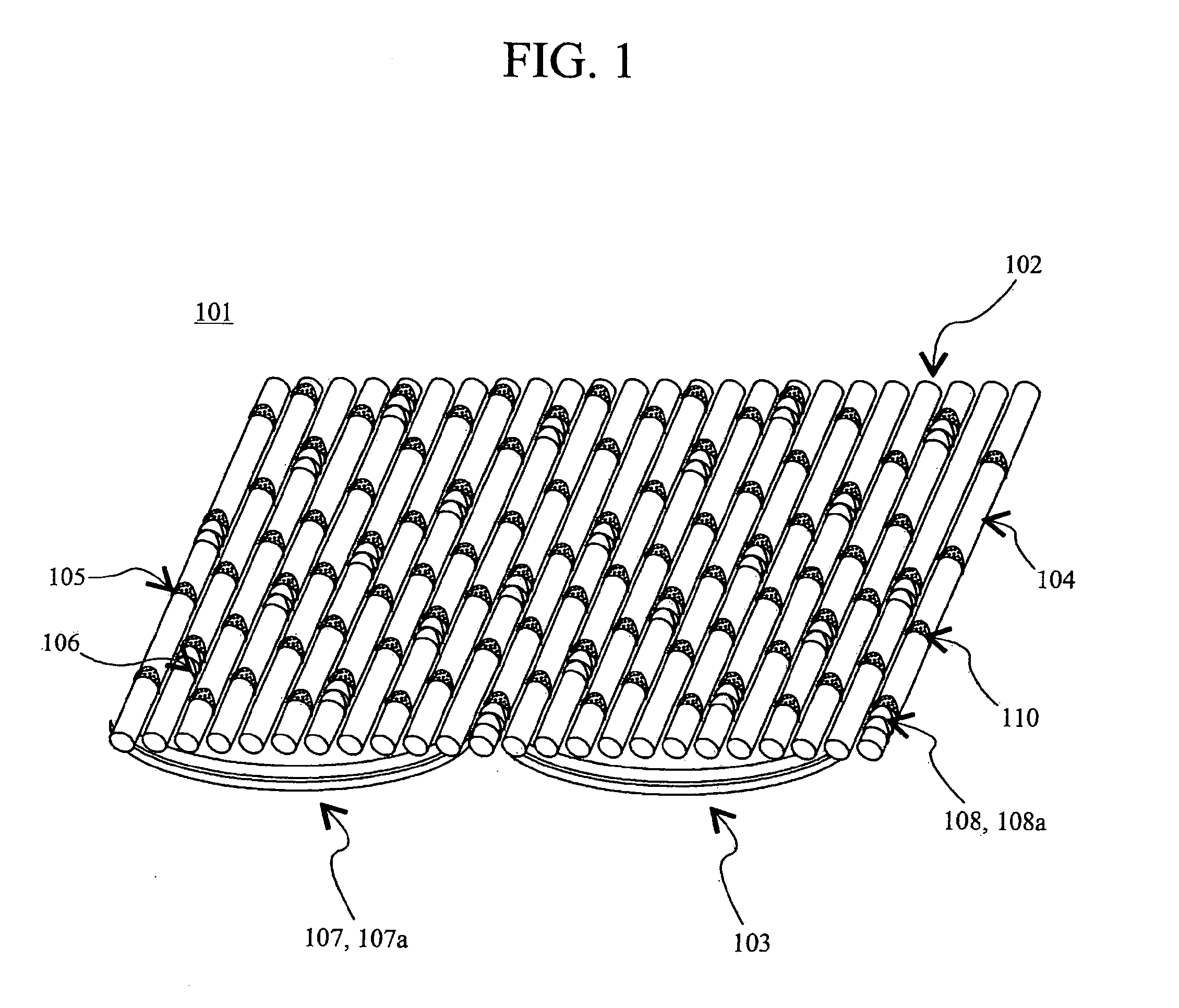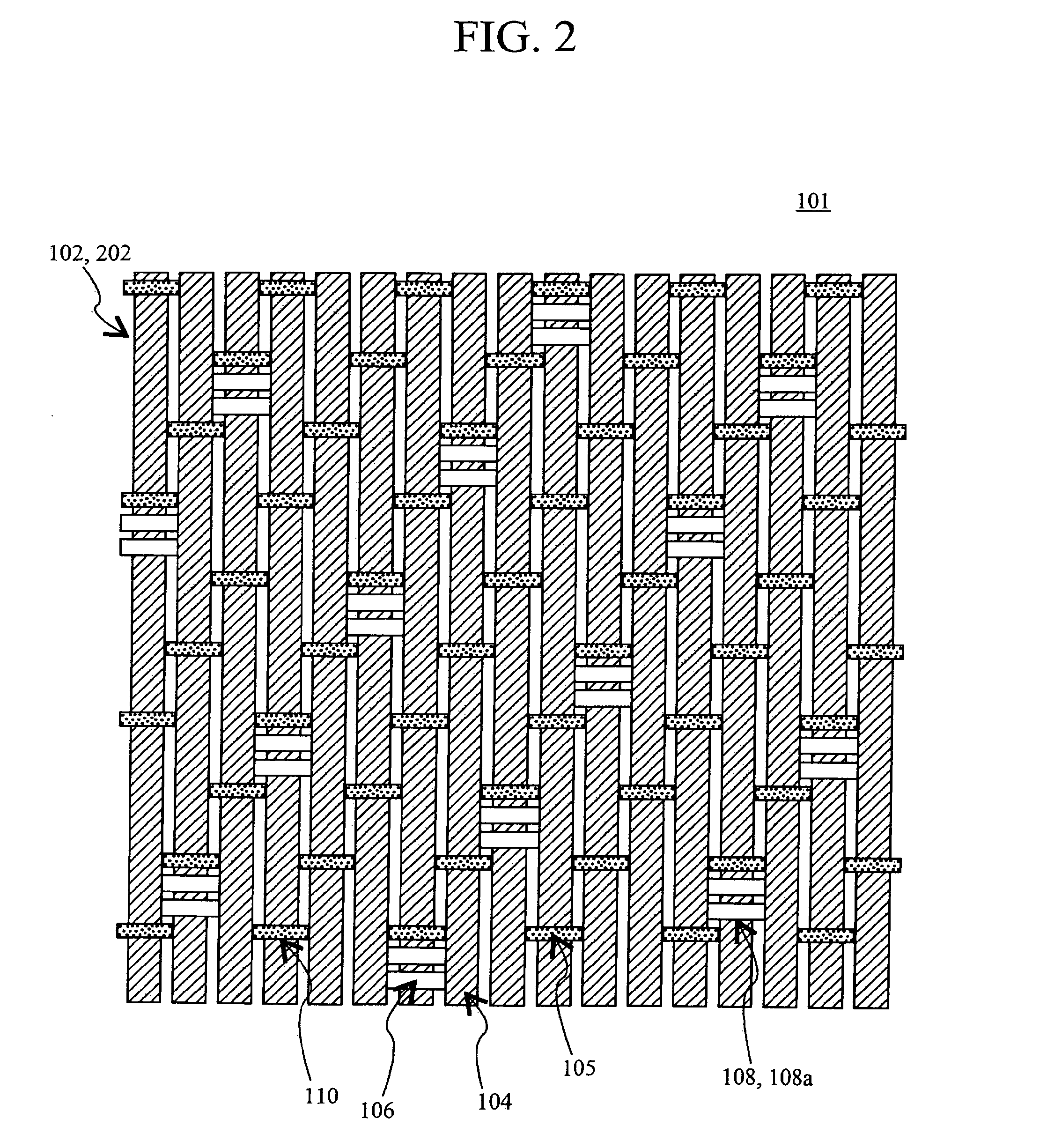Woven fabric that looks and performs like a knitted fabric and method of making thereof
a technology of woven fabrics and knitted fabrics, applied in the field of woven textiles, can solve the problems of inability to drape well over a figure, inability to popularize knitted indigo fabrics, and additional steps needed to create knitted indigo fabrics, and achieve the effect of saving the cost of knitting apparatuses
- Summary
- Abstract
- Description
- Claims
- Application Information
AI Technical Summary
Benefits of technology
Problems solved by technology
Method used
Image
Examples
example 1
[0067]The result of this exemplary embodiment is a knitted fabric having the weight and feel of a knitted t-shirt, but doing so with indigo dyed yarns which will allow for the application of abrasion effects previously only available at great cost. The warp yarns, weft yarns, warp density, weft density and loom set-up were chosen according to the values in Table 1. These selections gave the resulting fabric a weight of approximately 5-7 oz / sqyd (170-240 g / cm2). The weave pattern was selected according to the weave report depicted in FIG. 5. A dobby-type weaving loom with a weft selection system was used to perform the weaving.
TABLE 1WarpsElastomericHardpassed byWarpWeftWeftWarpWeftFabric“Loop”SampleYarnYarnYarnDensityDensityWeightPortionExample 1Ne 20 / 170 DenierNe 50 / 127 ends / cm54 picks / cm 5-7 oz / sqyd11Ring spunpolyester +Combedinin loom100%40100%weavingstatecotton,Deniercottonreedfabric,indigoLycraYarn61.5 picks / cmdyed yarn(with 3:5finisheddraftfabricratio)intermingledyarnExample 2...
example 2
[0072]The result of this example is a knitted fabric having the weight and feel of a knitted fabric. The warp yarns, weft yarns, warp density, weft density and loom set-up were chosen according to the values in Table 1. The weave pattern was selected according to the weave report depicted in FIG. 6. Examination of the weave report shows that the ratio of elastomeric yarns to hard yarns is 2:1, as opposed to 1:2 in Example 1. The ratio of over portions of elastomeric yarn / hard yarn is 4:1, i.e. the number of up and down movements of the elastomeric yarn (references 1 and 2 in the second column from left) are 4 times the number of up and down movements of the hard yarn (ref 3 in above mentioned column).
example 3
[0073]The result of this example is a knitted fabric having the weight and feel of a knitted fabric. The warp yarns, weft yarns, warp density, weft density and loom set-up were chosen according to the values in Table 1. The weave pattern was selected according to the weave report depicted in FIG. 7. Examination of the weave report shows that the ratio of elastomeric yarns to hard yarns is 1:1, as opposed to 1:2 in Example 1.
[0074]The ratio of over portions of elastomeric yarn / hard yarn is 4:1, i.e. the number of up and down movements of the elastomeric yarn (references 1 in the second column from left) are 4 times the number of up and down movements of the hard yarn (ref 2 in above mentioned column).
PUM
| Property | Measurement | Unit |
|---|---|---|
| shrinkage ratio | aaaaa | aaaaa |
| humidity | aaaaa | aaaaa |
| humidity | aaaaa | aaaaa |
Abstract
Description
Claims
Application Information
 Login to View More
Login to View More - R&D
- Intellectual Property
- Life Sciences
- Materials
- Tech Scout
- Unparalleled Data Quality
- Higher Quality Content
- 60% Fewer Hallucinations
Browse by: Latest US Patents, China's latest patents, Technical Efficacy Thesaurus, Application Domain, Technology Topic, Popular Technical Reports.
© 2025 PatSnap. All rights reserved.Legal|Privacy policy|Modern Slavery Act Transparency Statement|Sitemap|About US| Contact US: help@patsnap.com



